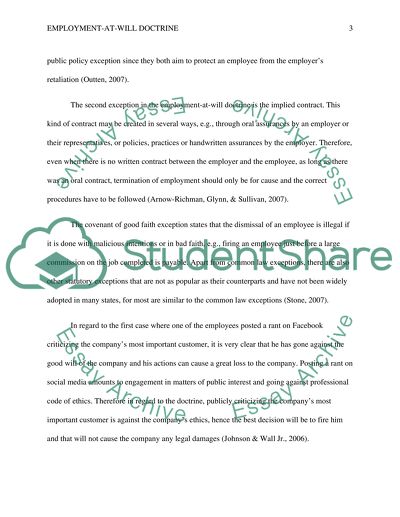Cite this document
(“Employment At Will Doctrine Assignment Example | Topics and Well Written Essays - 1500 words”, n.d.)
Retrieved from https://studentshare.org/law/1482001-employment-at-will-doctrine
Retrieved from https://studentshare.org/law/1482001-employment-at-will-doctrine
(Employment At Will Doctrine Assignment Example | Topics and Well Written Essays - 1500 Words)
https://studentshare.org/law/1482001-employment-at-will-doctrine.
https://studentshare.org/law/1482001-employment-at-will-doctrine.
“Employment At Will Doctrine Assignment Example | Topics and Well Written Essays - 1500 Words”, n.d. https://studentshare.org/law/1482001-employment-at-will-doctrine.


